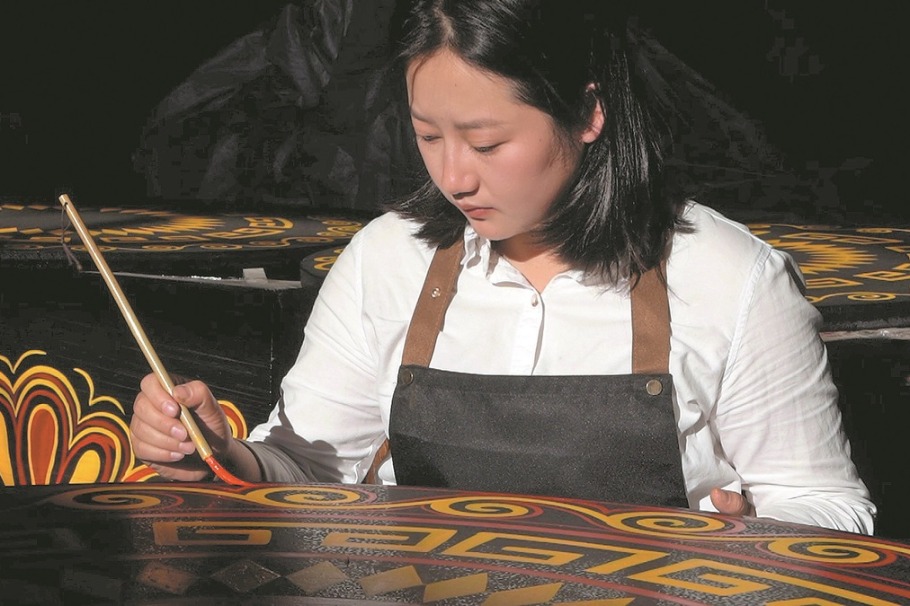China's observatory unravels key mystery of cosmic ray formation

BEIJING -- Scientists using China's Large High Altitude Air Shower Observatory (LHAASO) found that black holes, devouring material from their companion stars and producing jets, act as powerful particle accelerators and may play a key role in the production of high-energy cosmic rays in the Milky Way.
"The studies not only uncover the key mechanisms behind cosmic ray origins but also advance our understanding of the extreme physical processes of black hole systems," said Cao Zhen, principal investigator of LHAASO and an academician of the Chinese Academy of Sciences (CAS).
Cosmic rays are charged particles from outer space, mainly composed of protons. The origin of cosmic rays is one of the most important frontier issues in modern astrophysics.
Measurements of cosmic rays over the past decades have revealed a turning point around 3 PeV (peta-electron volt) in the energy spectrum, called the "knee" because its shape resembles a knee joint. The origin of cosmic rays in the "knee" region is one of the most intriguing topics in cosmic ray research in recent years.
The LHAASO research team found that microquasars driven by accretion onto black hole systems are powerful particle accelerators in the Milky Way and are likely the sources of the "knee."
The research, conducted by researchers from the Institute of High Energy Physics of the CAS, Nanjing University, the University of Science and Technology of China, La Sapienza University of Rome, and other institutions, was published in National Science Review and Science Bulletin on Sunday.
Black holes, among the most enigmatic objects in the universe, generate relativistic jets when they accrete material from companion stars in binary systems, forming "microquasars," the scientists explained.
In this study, LHAASO systematically detected ultra-high-energy gamma rays from five microquasars.
For instance, analysis of the microquasar SS 433 showed that the proton energy in this system exceeds 1 PeV, with a power output per second equivalent to the energy released by 400 trillion of the most powerful hydrogen bombs.
The gamma-ray energy from the microquasar V4641 Sgr reached 0.8 PeV, indicating that the parent particles generating these gamma rays likely had energies exceeding 10 PeV.
These results prove that microquasars are significant PeV particle accelerators in the Milky Way, Cao said.
To fully understand the "knee" of the cosmic-ray spectrum, precise measurements of the energy spectra of various cosmic ray species, including their respective "knees," are essential, Cao said.
Located on a mountain at an elevation of about 4,410 meters above sea level in southwest China's Sichuan Province, and covering an area of 1.36 square km, LHAASO is used for cosmic ray observation and research.
Leveraging its world-leading ground-based cosmic-ray observation equipment, LHAASO developed multi-parameter measurement techniques. The measurement revealed an energy spectrum structure that was entirely unexpected.
The new discovery not only marks a significant advancement in resolving the long-standing mystery of the "knee" origin, which has puzzled the academic community for nearly 70 years, but also offers crucial observational evidence for understanding the role of black holes as the origin of cosmic rays, Cao said.
LHAASO, which was designed, constructed, and is operated by Chinese scientists, has taken the lead in high-energy cosmic-ray researches due to its sensitivity in both gamma ray astronomical exploration and cosmic ray precision measurements. It has achieved a series of discoveries that have a global impact, thereby contributing to the understanding of the extreme physical processes in the universe, Cao added.
- China's observatory unravels key mystery of cosmic ray formation
- Beijing hit by freezing wind
- At 60, ECNU program continues to be a magnet for international students
- Laotian teacher gains Chinese education insights
- Yi lacquerware gets a new lease of life
- CNS Sichuan achieves desired results on its maiden sea trial





































